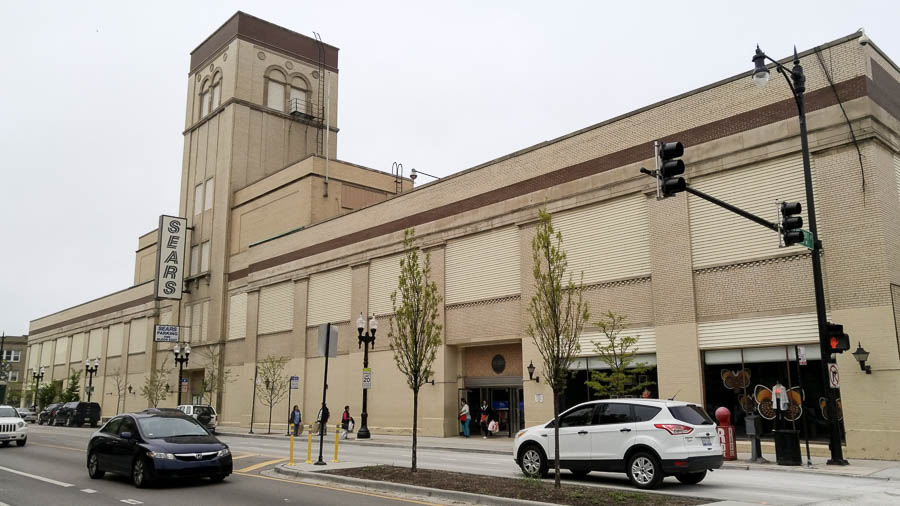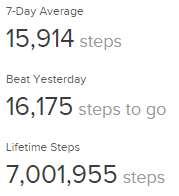Too many things to read before lunchtime:
Now, back to work.
Bullet the Bison takes this folk song literally:
The Dallas NBC affiliate has more.
Yes, I've posted a few things about the killing of Sears lately, because Eddie Lampert's investor call the other day was a train-wreck.
Well, Crain's has attempted to tote up the damage, and it turns out Lampert has reduced the value of Sears stock by over 90%—not counting the dead spin-offs:
Since he combined Sears Roebuck with Kmart in March 2005, Sears Holdings stock has lost roughly 90 percent of its value, dropping to an all-time low of $11.53 a share yesterday. The Standard & Poor's 500 Index has risen 75 percent over that same span.
But Sears Holdings doesn't tell the whole story. Since 2011, Lampert has carved out five investment vehicles from Sears. He spun off department store chain Sears Canada, hardware retailer Orchard Supply, hard-goods chain Sears Hometown & Outlet Stores, apparel company Lands' End and real estate investment trust Seritage Growth Properties. In some cases, Sears gave shares in the new company to shareholders in a direct spinoff; in others the shareholders got rights to buy stock in the newly independent company.
The total value of all these transactions to various shareholders depends on several variables, including when they bought into Sears, how many Sears shares they owned at the time of each spinoff, whether they exercised all subscription rights and how many shares of each company they still hold. But one thing is clear: Investors who stuck with Sears throughout Lampert's tenure would have done better with an S&P 500 Index Fund.
Yeah. How he's remained CEO of Sears boggles the mind.
After announcing yesterday that Sears will close its oldest retail store in the U.S. in the wake of a $1.13 bn loss last year, CEO Eddie Lampert told investors that he intends to return the chain to profitability in five years. Apparently their loyalty program is the problem:
Shop Your Way members sign up to receive coupons, and free shipping, and earn points that can be converted into dollars. Membership also provides access to a “social commerce” community on shopyourway.com that lets shoppers see what merchandise their friends have "liked" or purchased. Sears, in return, receives rich data about these customers that helps it adapt more quickly to serving them.
The program has been Lampert's pet project of the last five years. But after defending it and explaining that building such a platform and changing customers' behavior requires a lot of patience, he admitted what a lot of skeptical observers have long assumed: Shop Your Way just isn't getting people to spend enough money.
He said the platform has an enormous number of registered members, but many of them are not as active as he would like. Three-quarters of Sears' revenue comes from registered Shop Your Way members, but many of them are not frequent buyers.
"Getting people engaged and interested is super-important," he said. "We've built the platform, (but) we've fallen short on getting them engaged. Are we really getting the bulk of their purchases? We want to serve our members deeper. If you shop with us 10 times a year and spend $300, we'd like you to shop 100 times a year and spend $3,000."
NO, you putz, the problem isn't your loyalty platform; it's that you, personally, have spent ten years turning Sears into someplace no one wants to shop. Have you even been inside one of your stores lately?
A few years ago I spent two days inside a Sears store that had been converted into a health-insurance company's head office. I have never worked in a more depressing environment, and I'm including in "never" the time I worked graveyard shifts in a dorm security booth in college.
Eddie, the only way the company can return to profitability in five years is if you terminate retail operations and sell the remaining assets to Seritage. But face it: you killed one of America's greatest brands, all by yourself.
This is Sears, Roebuck & Co.'s very first brick-and-mortar store, located just a few blocks from my house:

The store opened in November 1925, and is closing this summer, as a consequence of Eddie Lampert's rape and involuntary homicide of the company.
Our local NPR affiliate, WBEZ, has the complete story.
Some articles:
Today's other tasks include cleaning my house and writing code for about four hours.
I just updated my Fitbit's firmware, which the app cheerfully told me would take "about 10 minutes." It took almost two hours. As a consequence, my 13-for-13 record for today could not be recorded as my device was off my wrist from 3:15 until just now.
Dang.
The Tribune has a graphic up demonstrating how Chicago temperatures dropped 20°C in one day. We went from a high temperature of 28°C at 4pm Monday down to a morning low of 7°C by 7pm Tuesday.
I should mention that I had several windows open Monday night, and closed them around 4am. That helped a little, but it would have helped more had I turned the heat on.
Despite the colder weather, through yesterday I've had six consecutive days of 15,000+ steps, including two of better than 20,000. Today looks promising as well. Fitbit also has a new feature that awards a pip for each clock hour in which you get 250 or more steps, the idea being to get you off your ass. I've got my app set to count from 8am to 9pm. Since Friday, I've had 13 of 13 hours four of five possible days—and today looks pretty likely as well. (The trick is to take Parker for a walk at 5 minutes before the hour, which gets me two pips in 10 minutes.
This just happened today:

Also, yesterday was the fifth day in a row that I topped 15,000 steps. Today it's gray and cold, so I may not get that many.
Today's weather was finally spring-like, meaning twenty degrees warmer away from the lake than near it. But Parker still got over an hour of walkies, I've gotten (so far) about 18,000 steps, and all the windows in my house are open for the first time in about a month.
Also, I made a decent showing yesterday at a trivia tournament (tied for first place, but lost the tiebreaker), and today at a Euchre tournament (upper half of the pack, 7-2-1 overall record).
That is all. Time to feed the dog, and maybe walk another couple thousand steps.